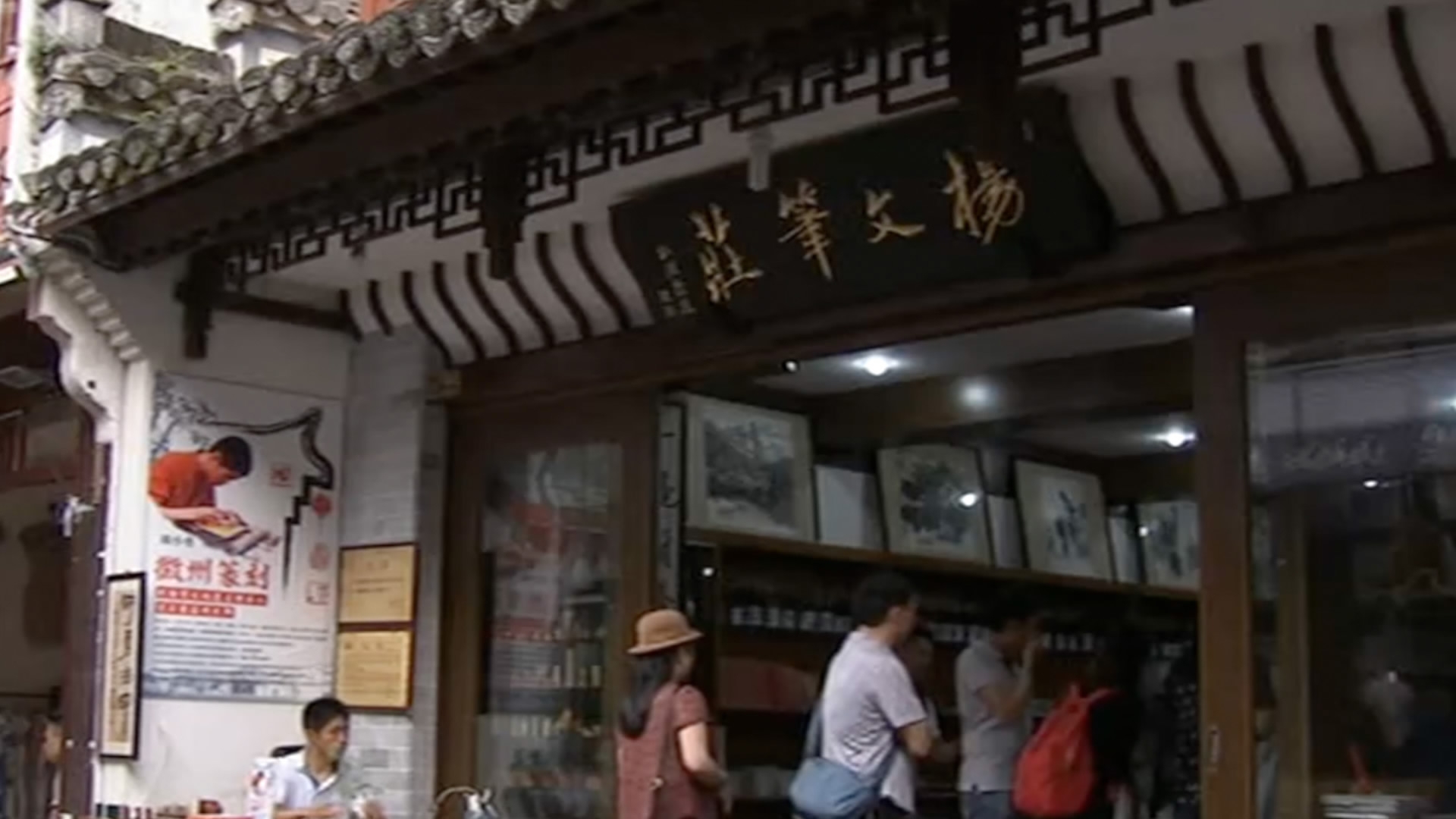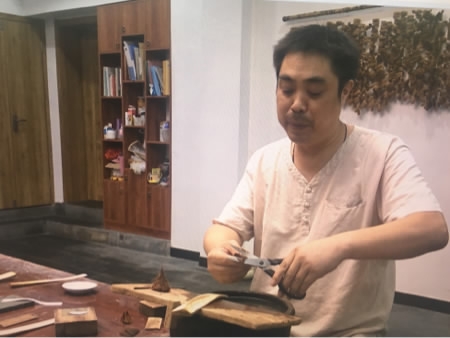
Culture
22:48, 16-Sep-2017
Chinese families help preserve calligraphy
By CGTN's Li Yuhao

Weasel hair brushes, bamboo handles and hours of dedication are some of the essentials that are keeping the traditional art of Chinese calligraphy alive.
For the rest of the world, the art is synonymous with Chinese culture. In China, for some, it is still hard to keep the art alive.
More and more traditional arts are falling as technology advances. They include what Chinese called the Four Treasures of the Study - the brush, ink, paper and ink stone - used in calligraphy and brush painting, which dates back to the 5th Century.
Some people believe traditional arts like calligraphy have had a long life and there is no harm in letting them go. But a growing number of people think all forms of art should be preserved.
"It is traditional Chinese culture. I will recommend my daughter to practice calligraphy," according to one male tourist.

Calligraphy brush maker Yang Wen. /CGTN Photo
Calligraphy brush maker Yang Wen. /CGTN Photo
A local woman, meanwhile, said, "Children should learn calligraphy as it is a treasure of China's cultural heritage. It would be a shame if calligraphy disappeared."
People tend to focus on calligraphy as a form of art for writing. But even before the writing begins, a considerable amount of effort and care went into the preparation of the four treasures. For example, it can take up to one week to make a single brush.
Making the four treasures requires keen eyes and talented hands, but only truly dedicated craftsmen and women are willing to endure the long hours and low pay. Yang Wen, who learned to make brushes from his father and grandfather, has his workshop in an old street in Huangshan city in east China's Anhui Province. He insists on handmade brushes.
Calligraphy brush maker Yang Wen's family has been in the business for generations. He said making brushes required discipline.
"My father and grandfather were very strict to me. They wouldn't let me make brushes by myself until my skill reached a certain level."
Brushes are often made from animal fur, the finest being the yellow weasel. The handles are usually made from bamboo. Individual hairs are selected for length and softness, then bunched and dried, and attached to the handle.
Mass production of brushes is gaining popularity. But Yang Wen sticks to his craft. He says innovation is a determining factor in making customized brushes.
"I gave up the profession a few years ago. But I restarted it with new methods to meet the needs of different customers," Yang Wan added.
Yang Wen said making brushes is like refreshing once life.
"When you release all the burden and pressure, you can refresh yourself, and discover new ways or even create a new style," he said.

SITEMAP
Copyright © 2018 CGTN. Beijing ICP prepared NO.16065310-3
Copyright © 2018 CGTN. Beijing ICP prepared NO.16065310-3